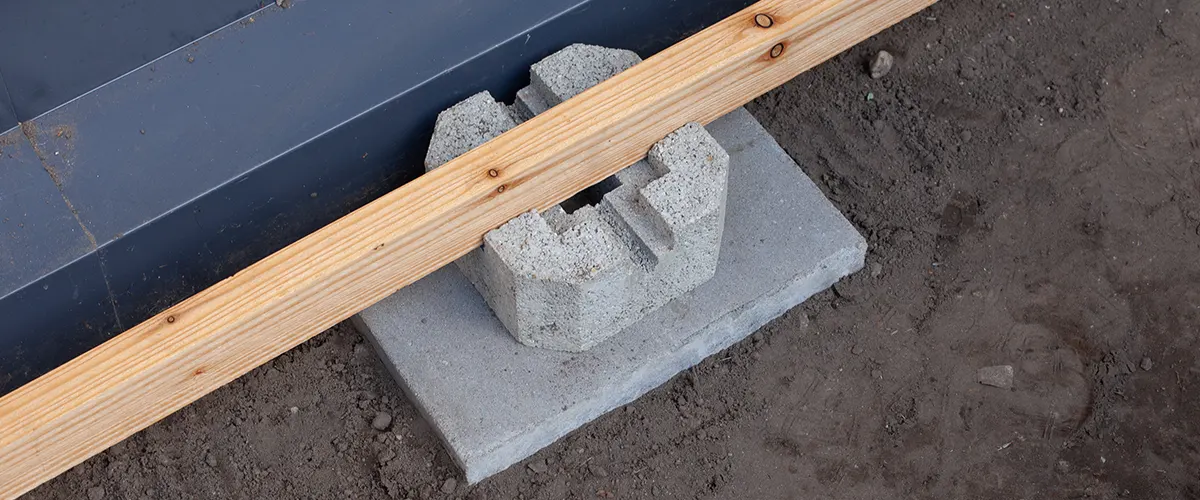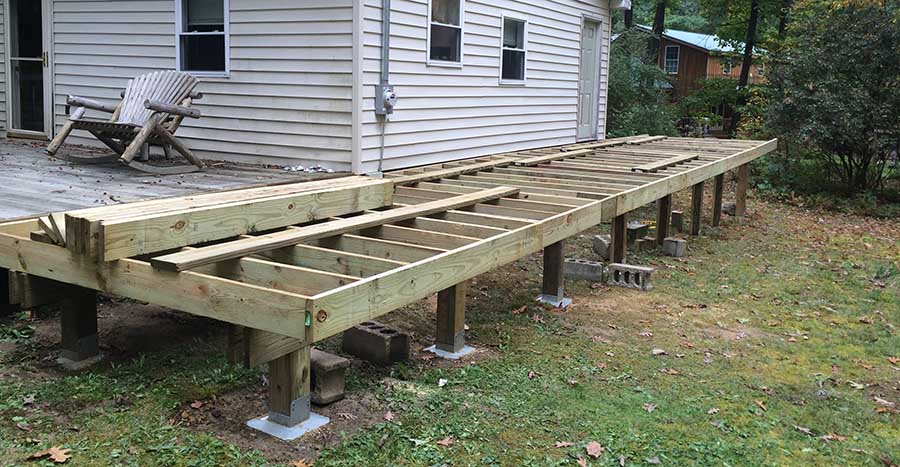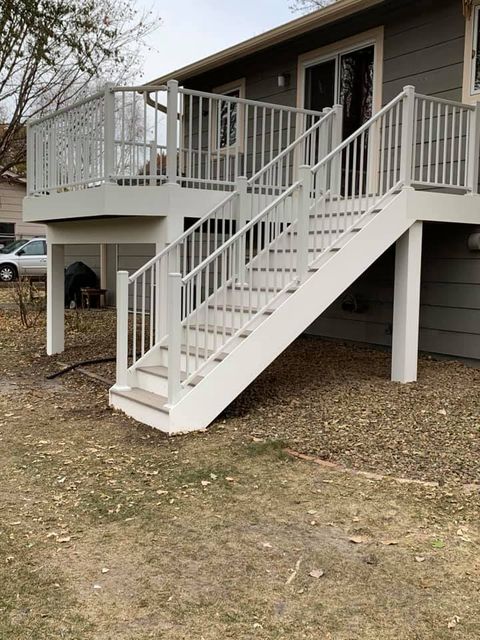Deck Footings 101: Navigating the Essentials for a Secure and Long Lasting Deck
Deck Footings 101: Navigating the Essentials for a Secure and Long Lasting Deck
Blog Article
Expert Tips for Putting Up Deck Footings to Assistance Your Outdoor Area
When it comes to developing a deck, one of the most important components to consider is the setup of correct footings. These footings are the foundation upon which your exterior space will rest, supplying stability and support for years to come. What specifically does it take to mount deck grounds properly?
Relevance of Appropriate Deck Grounds
Appropriate deck footings are necessary for ensuring the security and durability of your outside space. When constructing a deck, it is crucial to pay interest to the foundation on which it will rest. Deck footings give the needed support for the whole framework and aid distribute the weight equally - Deck Footings. Without solid and correctly installed footings, your deck may come to be unsteady, bring about security threats and costly fixings.

In enhancement to security, correct deck footings also add to the durability of your outside space (Deck Footings). Footings that are developed and created to endure the components and dirt conditions in your area will certainly aid avoid the deck from changing or working out with time. By making certain the grounds are properly sized and installed, you can reduce the danger of damages to the deck framework, expanding its life-span and lowering the need for pricey repair work or replacements

Selecting the Right Type of Grounds
When selecting the proper kind of footings for your deck, it is very important to consider aspects such as dirt problems, regional building regulations, and the overall style of your outdoor space. The type of footing you select will play a vital role in making sure the stability and durability of your deck.
One typical type of ground is the concrete ground. Concrete footings are suitable for the majority of dirt conditions and supply superb assistance for decks.
In many cases, you may need to utilize specific grounds, such as stack grounds or deep structures, if you are building a multi-level or big deck. These grounds are developed to distribute the weight of the deck over a bigger location, making certain security and stopping sinking or working out.
Prior to picking a sort of footing, it is vital to get in touch with regional building ordinance and laws to make sure compliance. In addition, consider the design and planned use your outside area. Factors such as the dimension, shape, and load-bearing needs of your deck will affect the sort of footing that is most suitable.
Preparing the Ground for Footing Installation
To properly prepare the ground for footing installation, it is necessary to analyze the dirt conditions and take essential actions to make certain security and sturdiness of the deck. The very first step is to dig deep into the area where the grounds will certainly be installed. The depth of the excavation will depend upon the frost line in your view it now area and the details requirements of the deck design. It is crucial to get rid of any type of vegetation, rocks, or particles from the excavation to guarantee a strong foundation.
As soon as the area has been excavated, the next step is to compact the soil. This can be done making use of a plate compactor or by utilizing a hand tamper. Compacting the soil assists to eliminate any spaces or air pockets, which can lead to working out and instability over time.
After compacting the soil, it is vital to lay a layer of crushed rock or crushed rock at the end of the excavation. This will supply water drainage and assistance to avoid water from pooling around the footings, which can bring about erosion and instability.
Step-by-Step Guide to Putting Up Deck Footings
After appropriately preparing the ground for footing setup, the next action is to start the procedure of setting up deck grounds. This detailed overview will certainly supply you with a Deck Footings clear understanding of exactly how to set up deck grounds for your outside room.
Figure out the location: Start by noting the positions of the deck footings making use of stakes and string. Guarantee that the places line up with the layout and format of your deck.
Dig the holes: Use a post hole digger or an auger to dig the openings for the footings. The depth and size of the holes need to be in accordance with neighborhood structure codes and the certain needs of your deck design.
Level the holes: Utilize a degree to make certain that the openings are dug to the proper deepness and are degree with each other. (Deck Footings)
Add gravel: Place a layer of gravel at the base of each opening to boost drain and protect against the wood from deteriorating.
Place the grounds: Position the footings right into the holes, ensuring they are level and plumb. Make use of a degree and a measuring tape to make certain precision.
Secure the grounds: Put concrete right into the holes around the footings, filling them to the top. Make use of a blog post level to make sure the footings stay level as the concrete collections.
Enable time for curing: Let the concrete cure according to the producer's guidelines before proceeding with the deck building and construction.
Usual Mistakes to Stay Clear Of Throughout Footing Setup
One essential facet to think about throughout the installation of deck footings is preventing usual mistakes that can endanger the stability and longevity of your outside area. While deck footings might look like a easy and uncomplicated component of the construction process, neglecting particular elements wikipedia reference can lead to costly fixings and prospective safety hazards down the line.

Furthermore, disregarding to set up appropriate drain actions can create water to gather around the footings, leading to rot, degeneration, and the eventual weakening of the deck's foundation. Additionally, utilizing the wrong kind of footing product or failing to properly protect the footings can jeopardize their structural stability.
To prevent these errors, it is important to seek advice from a specialist or adhere to sector guidelines to guarantee correct footing setup. By doing so, you can guarantee the stability and longevity of your exterior area, providing a delightful and safe environment for many years to find.
Verdict
To conclude, setting up correct deck footings is essential for the security and durability of your exterior space. By picking the best sort of footings and properly preparing the ground, you can make certain a solid structure for your deck. Following a step-by-step overview and staying clear of usual mistakes during footing installation will further boost the resilience and safety and security of your deck.
Correct deck footings are important for guaranteeing the security and long life of your exterior area. The grounds offer as a connection in between the deck and the ground, enabling the weight of the deck and its owners to be distributed evenly right into the dirt.One common kind of footing is the concrete ground. Insert the footings: Put the grounds into the holes, making certain they are level and plumb. Safeguard the grounds: Put concrete into the holes around the footings, loading them to the top.
Report this page